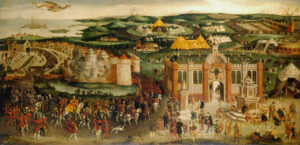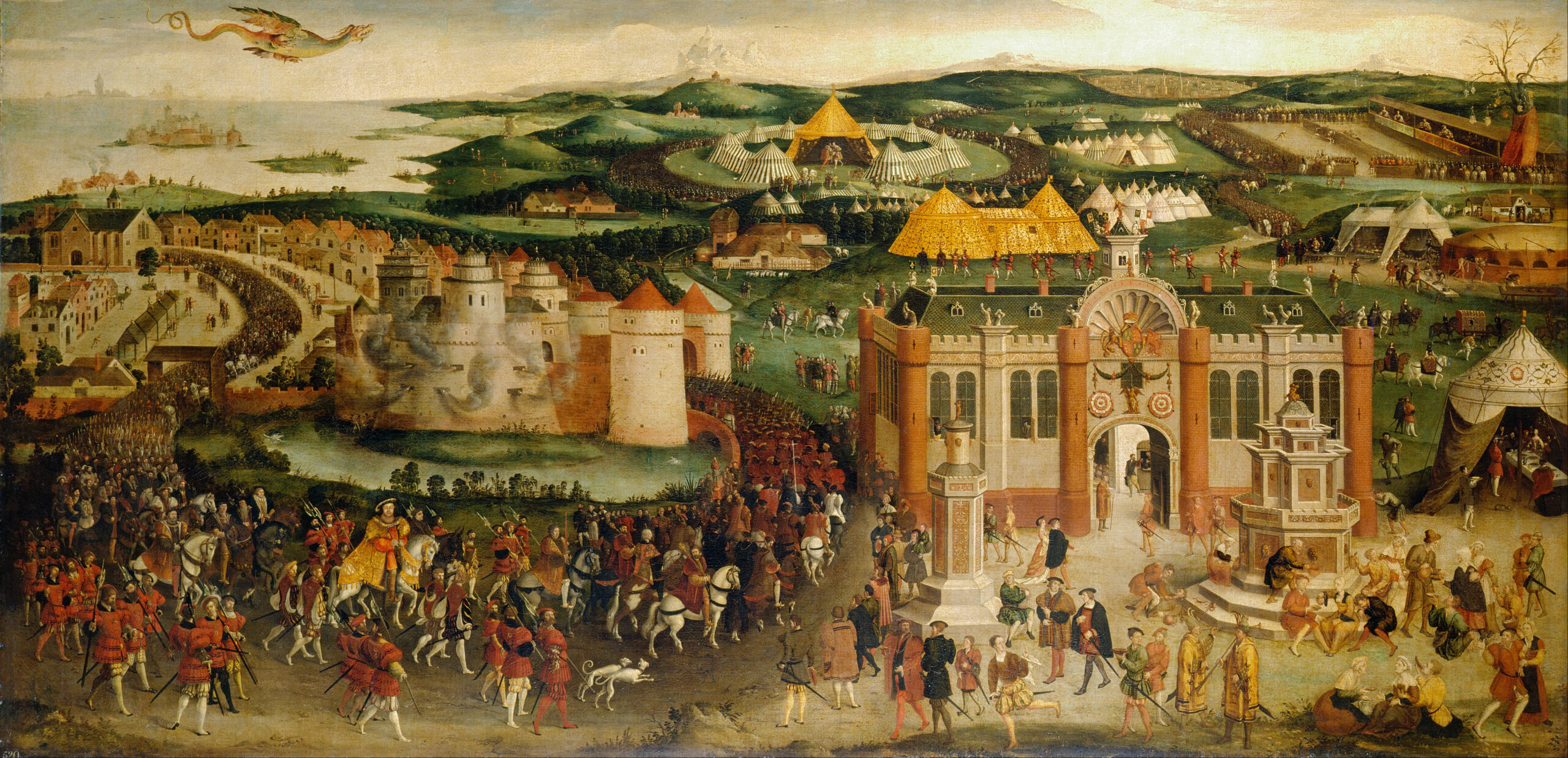21 May 2020
The Dating Game
The Tudors.
By Chin Chin
 And now the player of the Dating Game collects some dividends. By thinking dates you can watch the Renaissance spread across from the continent to Britain. Hampton Court, begun in 1522 by Cardinal Wolsey, was a state-of-the-art palace designed to impress. But compare it to Chenonceaux or Chambord on the Loire, constructed at about the same time, and you will not need to recall that Leonardo died working in France in 1547 to appreciate that in architecture we were the country cousins, limping along behind continental fashion. Go to the Loire to see for yourself. The countryside is lovely, the food and wines superb. Make it a week at the least but remember the rewards are for those who play the game by learning the dates of each king and one event (to be chosen by you) in each reign. Now for the Tudors.
And now the player of the Dating Game collects some dividends. By thinking dates you can watch the Renaissance spread across from the continent to Britain. Hampton Court, begun in 1522 by Cardinal Wolsey, was a state-of-the-art palace designed to impress. But compare it to Chenonceaux or Chambord on the Loire, constructed at about the same time, and you will not need to recall that Leonardo died working in France in 1547 to appreciate that in architecture we were the country cousins, limping along behind continental fashion. Go to the Loire to see for yourself. The countryside is lovely, the food and wines superb. Make it a week at the least but remember the rewards are for those who play the game by learning the dates of each king and one event (to be chosen by you) in each reign. Now for the Tudors.
Henry VII, 1485-1509
Henry’s reign was illuminated by two important women. The first, Elizabeth of York, was the Yorkist heir and a potential rallying point for rebels. How to stop the Wars of the Roses starting all over again? Yes, a political marriage between Henry and Elizabeth 1486. The fact that they then fell in love with each other seems more like a fairy story than the truth it actually is and Elizabeth, loved for her beauty, generosity and good nature, softened Henry’s miserable and miserly instincts until her death in 1503.
The second woman was Henry’s formidable mother, Lady Margaret Beaufort, by then wife of Lord Stanley, administrator of the North of England, granted the status of femme sole by Parliament so that she could administer her own property, founder of two Cambridge colleges, et cetera et cetera et cetera. Appointed Henry’s executor, she died two months after him having overseen the succession by Henry VIII.
What about:
Morton’s Fork in 1491, a tax or “voluntary benevolence” extracted from the wealthy. Those who spent their money could clearly afford to pay and those who did not clearly had untapped savings. Neat really.
The death of Arthur, Henry’s eldest, in 1502, something which caused the normally undemonstrative sovereign something of a breakdown, particularly when followed by the death of Elizabeth in the following year. Arthur’s brother Henry became the heir.
Henry VIII, 1509-1547
We are not going to list Henry’s wives or the murderous executions for which he was responsible because you probably know them already. Anyway, there were lots of other events in his reign well worth your attention. What about:
Flodden and Spurs 1513: Henry beat the French at Spurs and his wife Catherine, left at home to look after things, oversaw the victory over the Scots at Flodden where the Scottish King was killed. Although this meant the end of Scottish support for France, Henry did not have the money to pursue his invasion and agreed a peace deal.
The Field of the Cloth of Gold 1520, a summit meeting near Calais between Henry and Francis I of France, the rival big spender over the water. With the Renaissance going strong it turned into a competition about clothes on which vast amounts were spent. A friendly wrestling match took place in a sort of bromance between the two Kings. The result? England and France were at war again the following year.
Acts of Supremacy 1534 declaring Henry to be head of the Church of England and setting the stage for the execution of Thomas More and John Fisher for refusing to take oaths in support, the dissolution of the monasteries with much of the land passing to the Crown, the execution of those who resisted, including the Carthusians and the Abbot of Glastonbury, and the destruction of England’s visual artistic heritage which was largely focused on religious institutions. Arguably this pushed the creative urge into literary channels, those of Marlowe, Shakespeare and Milton.
Pilgrimage of Grace 1537, a northern rising against the dissolution of the monasteries which Henry defused with pardons and promises to consider grievances, none of which he felt obliged to keep when unrest continued.
Edward VI, 1547-1553
Coming to the throne at the age of nine and dying before his 16th birthday, it is unclear what influence he had on the administration of successive protectors Somerset and Northumberland. What is clear, however, is that his enthusiasm for the new Protestant religion enabled Cranmer, as Archbishop of Canterbury, to push forward the reforms which provided the roots of the Church of England. What about:
The prayer book of 1552, which still remains the basis for much Church of England worship.
Mary, 1553-1558
The daughter of Henry VIII’s first wife Catherine of Aragon, Mary was a devout Roman Catholic and initially her protestant cousin Lady Jane Grey was recognised as Queen. However, the Privy Council were forced to change their minds and England had a Queen who was determined to reverse the Reformation and who was soon married to Philip II of Spain. Time for the Protestants to suffer on the altar, or rather the pyre, of religion. What about:
The burning of Bishops Latimer and Ridley in 1555: “Be of good cheer, master Ridley, and play the man; we shall this day light such a candle in England, as I hope, by God’s grace, shall never be put out.” Cranmer was burned the following year.
Loss of Calais 1558: Bye bye to the last English continental possession.
Elizabeth I, 1558-1603
Gloriana, well dressed, long lived, The Fairy Queen of Spenser, but above all modern in that she, like Henry IV her French counterpart, understood that it was time to wind down the wars of religion. “I would not open windows into men’s souls.” There is little choice about the event:
Defeat of Spanish Armada 1588, something of a quote fest. From the successful vice admiral Drake playing bowls when the Spaniards were sighted: “There is plenty of time to win this game, and to thrash the Spaniards too.” But the last word should be that of the Queen addressing the sailors at Tilbury: “I know I have the body of a weak and feeble woman, but I have the heart and stomach of a king, and of a king of England too.”
See also:


